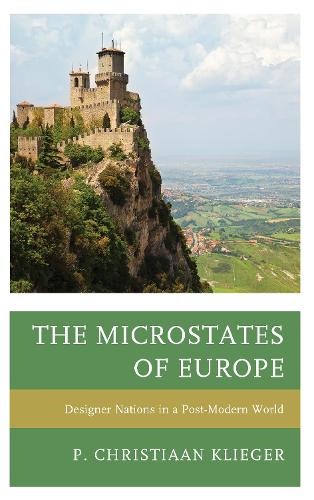
The Microstates of Europe: Designer Nations in a Post-Modern World
(Paperback)
Publishing Details
The Microstates of Europe: Designer Nations in a Post-Modern World
By (Author) P. Christiaan Klieger
Bloomsbury Publishing PLC
Lexington Books
21st July 2014
United States
Classifications
Professional and Scholarly
Non Fiction
Social and cultural anthropology
Migration, immigration and emigration
Regional / International studies
European history
301
Physical Properties
Paperback
242
Width 156mm, Height 228mm, Spine 18mm
381g
Description
The seven microstates of Europe, i.e. Andorra, Liechtenstein, Monaco, Malta, San Marino, Sovereign Order of St. John, and Vatican City are remarkable not only for their size, but their persistence. Most have been around for centuries, while much larger empires have come and gone. Despite the great events of the last two millennia, these countries have come into existence and have managed to steer a course away from incorporation within their larger neighbors. Why is this Rather than being an exercise in triviality, the study in The Microstates of Europe: Designer Nations in a Post-Modern World of the histories of these tiny states may provide insight into tenaciousness of national aspirations and ethnic solidarity that are everywhere evident. Modernist studies tend to view the microstates as illogical anomalies destined to disappear under the crush of social progress. However, these states are anything but marginalin fact, they are among the richest states in the world. This book examines the phenomenon from structural history and anthropological perspectives. It is not a grand history of petite placesrather, it is an ethnographic anthology of a few places in Europe that should not logically exist. The Microstates of Europe is a post-modern critique of the trends of globalism, and it examines the counter-trend of increasing nationalism, particularism, and cultural relativism. Rather than being eclectic exceptions, the microstates may demonstrate the survival of extremely long enduring mechanisms of collective boundary maintenance that are most likely present in many communities throughout the world.
Reviews
The microstates of Europe are usually the stuff of travel guides. Klieger offers brief historical sketches of Andorra, Liechtenstein, San Marino, Vatican City, and Monaco. He includes two chapters on the sixth microstate, Malta. He also considers a number of wannabes with short histories. Klieger points out that the microstates have maintained their more or less independent status for centuries. The book is rather whimsicalKlieger includes a recipe for stewed rabbit with advice to send 'condolence letters to rabbits' families.' There are references and a bibliography. The book can be recommended for the general reader or traveler to the European microstates. Summing Up: Recommended. General readers only. * Choice Reviews *
This remarkably readable, erudite and original book sheds light not only on the history and current rationale of European micro-states, but also, and more importantly, reveals important features of the contemporary world, including a timely analysis of the limits of globalism. It is an entertaining and enlightening book which should easily find its niche in one of the micro-markets of academic publishing. -- Thomas Hylland Eriksen
This book is an ingenious and unusual in-depth exploration of a phenomenon that has for too long been a relatively unanalyzed but distinctive aspect of European society. The author explores intriguing and revealing byways of history and reveals to us in micro much about how nation states are created and maintained in macro. -- Andrew Strathern and Pamela J. Stewart, University of Pittsburgh
Author Bio
P. Christiaan Klieger is a leading expert on the principle of self-determination among the peoples of Tibet. He has also worked extensively with Native Hawaiians in historic preservation and with Native North Americans on self-determination and the application of Native voice in museums. He is the author of several books on the history of Tibet and the Hawaiian kingdom and dozens of articles.
